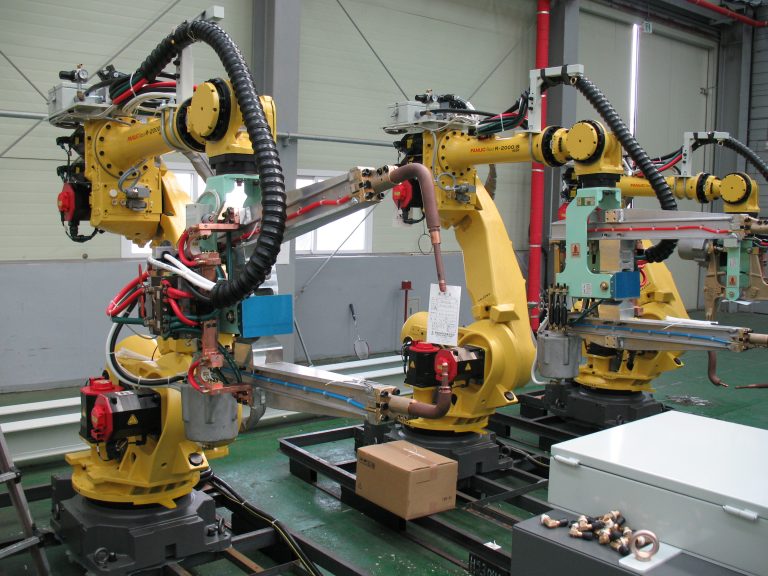
BY TYLER DURDEN
The impending takeover of the American labor market by robots now has a trade group to represent its interests. It’s called the Association for Advancing Automation, or A3, and according to them, 2021 was a boom year for sales: more robots joined the American workforce last year than ever before. And 2022 promises to beat those numbers by a solid margin, as early indications suggest the jobs market saw another COVID-driven contraction during January.
Companies across North America laid out more than $2 billion for almost 40K robots in 2021 as large swaths of the human labor force suddenly became immobilized by COVID and the economy-crushing lockdowns impsed not just in the US but across the globe – wreaking unprecedented supply-chain crushing havoc inside the engine of global trade.
And with demand, as it happens, surging now more than ever, the increasingly common shortages in stores across the country have made clear: it’s time to bring in the robots.
And according to A3 data cited by Reuters, companies across North America spent $2 billion for some 40K robots in 2021. Robots went to work in a growing number of industries, expanding well beyond their historic home base in the automotive sector.
As the sales chief for one robotic “logistics” firm so eloquently put it, humans need food, sleep and well enough to work. For robots, none of this is true.
“With human labor, what they produce depends on if they’re hungry or are they tired or have they had their coffee,” said Brian Tu, chief revenue officer for DCL Logistics in Fremont, California, which started installing robots on e-commerce fulfillment lines during the pandemic. Robots are dependably fast and do not take breaks.
Factories and other industrial users ordered 39,708 robots in 2021, 28% more than in 2020, according to the A3. The previous annual record for robot orders was set in 2017, when North American companies ordered 34,904 robots valued at $1.9 billion.
And there are other signs of robotics’ growing influence on the labor force, such as their increasing use across a broader range of industries.
As recently as 2016, more than twice as many robots were sold to auto makers as to all other industry sectors combined. But in 2020, other businesses eclipsed automakers as buyers of the advanced machines, and the share of robots going to non-auto companies grew further in 2021.
The list of industries that have seen the biggest increase in robot usage corresponds with those that have experienced the biggest disruptions from the pandemic: food processing plants, and e-commerce (as demand for packages soared).
E-commerce is another fast growth sector. At DCL, which has five U.S. fulfillment centers and will soon open a sixth, the lines that have gotten robots can operate with fewer people – yet produce 200% more, according to Tu.
“We still have employees working around the robots,” he added, “but we can reduce labor by roughly half.”
But setting aside the question of efficiency, the biggest driver of automation in manufacturing remains necessity amid a paucity of workers.
“The number one driver for automation is the labor shortage in manufacturing,” said Joe Campbell, a senior manager for applications development at Universal Robots, a unit of Massachusetts-based Teradyne Inc (TER.O), which specializes in cobots. And the pandemic is not the only factor driving the change. Universal estimates 2,000 Baby Boomers are retiring daily in manufacturing, robbing factory floors of veteran expertise.
As we await the latest NFP jobs number to be released tomorrow, employers had 10.9 million vacant positions, nominally below the record 11.1 million from earlier in 2021. There are now an unprecedented 1.7 open jobs for every unemployed worker, and at least one policymaker at the Federal Reserve – St. Louis Fed President James Bullard – sees the US unemployment rate dropping below 3% this year for the first time since the 1950s.